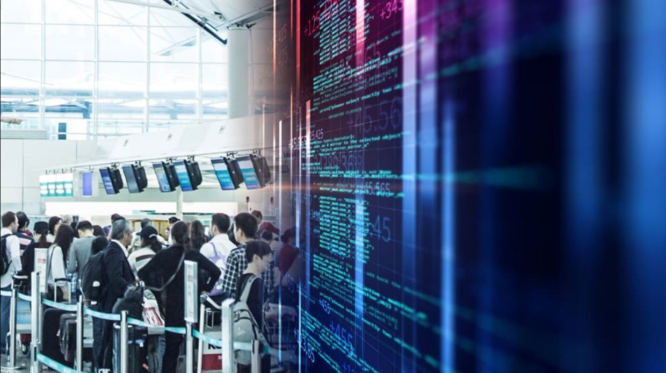A system malfunction grounded all US planes in January 2023, dampening Christmas celebrations. Over 4000 planes were delayed and 600 were canceled, sparking a global discourse about airport hacks.
The worldwide smart airports market is predicted to increase from USD 7.7 billion in 2023 to USD 19.4 billion by 2033, at a 9.7% CAGR. Aviation is increasing rapidly. India, too, is spending extensively on airport infrastructure to improve local and global connectivity.

To boost its economy, sustain cargo operations, fulfill passenger needs, and create money, the country is boosting airport operations. Indian airports are experiencing massive digital transformation and modernizing technologies to improve efficiency.
Airports are national assets that operate 24/7, and cyberattacks require cyber resilience to safeguard them.
Airports are national assets that operate 24/7, and cyberattacks require cyber resilience to safeguard them. As the aviation sector grows, airport infrastructure becomes increasingly complicated. Latest digital technologies are essential to satisfy demanding requirements, improve passenger security, and boost operational efficiency.
While airport digitization brings up huge benefits, it also exposes a highly digitalized environment to dangers and threats. Thus, smart technology-based cybersecurity is essential.
Unauthorized gamers can access sensitive data, bring down huge linked systems, disrupt traffic, create financial and reputational harm, raise safety breaches, and airport security concerns. AI, ML, and IoT must be used to make airports smarter.
Smart cybersecurity solutions can detect and monitor critical IT infrastructure in real time. AI and ML make it easy to analyze massive data sets from digital systems, spot trends, and conduct fast risk assessments to uncover susceptible areas and avoid intrusions.
Beyond early threat detection and real-time monitoring, advanced digital technologies may use prior intrusions to improve future protection.
IoT-enabled sensors, cameras, and others improve airport infrastructure threat monitoring. They automate security operations, improve threat mitigation, and reduce human mistakes by intervening quickly to protect vital systems, sensitive data, and overall safety.

Real-time data analytics and predictive maintenance streamline operations and reduce downtime and delays using IoT devices.
Facial recognition, video analytics, and others increase airport security, traveler convenience, and overall experience.
Network segmentation, intrusion detection and prevention systems (IDPS), access control systems, encryption, advanced threat protection, security information and event management (SIEM), and incident response planning (IRP) can also prevent airport cyberattacks. Smart tools like facial recognition and video analytics improve airport security and traveler convenience.
To be effective, these systems must be properly deployed and maintained, and airport staff must be taught on cyberattack response management. To secure airports against these dangers, testing, updating, and upgrading these parts is necessary.
Safety and efficiency are driving airport cyber resiliency. Innovative technologies can develop smart airports and safeguard them against emerging dangers. These smart and intelligent technologies should be used to control airport safety and security systems proactively and effectively.

